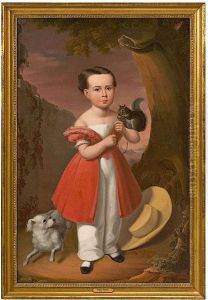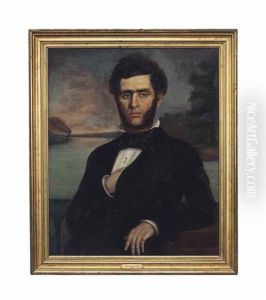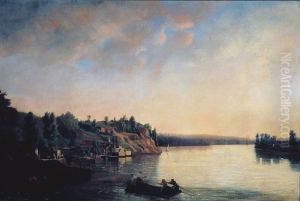Louis Joseph Bahin Paintings
Louis Joseph Bahin was a French landscape and portrait painter, born in 1824 in Caen, France. His artistic journey began under the guidance of local painter François-Hippolyte Guérard, who helped nurture Bahin's developing talents. Bahin later moved to Paris, where he furthered his education at the École des Beaux-Arts, studying under renowned instructors such as Paul Delaroche, a prominent painter of the time known for his historical scenes.
In the early stages of his career, Bahin focused primarily on landscape painting, drawing inspiration from the French countryside and the Normandy coast. His work was characterized by its romantic sensibility and a keen eye for the interplay of light and shadow, attributes that garnered him a modest following and critical praise within art circles. Bahin's landscapes often featured lush rural scenes and serene coastal views, capturing the tranquil beauty of nature.
As he matured as an artist, Bahin expanded his repertoire to include portraiture, which proved to be a successful venture for him. His portraits were notable for their depth of character and sensitivity to the subject's personality. Bahin's ability to capture the essence of his sitters earned him commissions from various notable figures of his time, enhancing his reputation in the competitive Parisian art market.
Despite his skills and growing recognition, Bahin never achieved the level of fame enjoyed by some of his contemporaries. He exhibited his work at the Paris Salon, the official art exhibition of the Académie des Beaux-Arts in Paris, where he received favorable reviews. However, he remained a relatively modest figure in the art world, dedicated to his craft but overshadowed by the likes of his peers such as Courbet and Corot, who were leading figures in French art during the mid-19th century.
Louis Joseph Bahin continued to paint throughout his life, with his work evolving in response to the changing artistic trends of the time. He died in 1899, leaving behind a body of work that, while not widely known today, offers a glimpse into the artistry and culture of 19th-century France. His paintings can be seen as a testament to the enduring appeal of landscape and portrait art, and they remain appreciated by collectors and art historians who recognize his contribution to the French artistic legacy.


